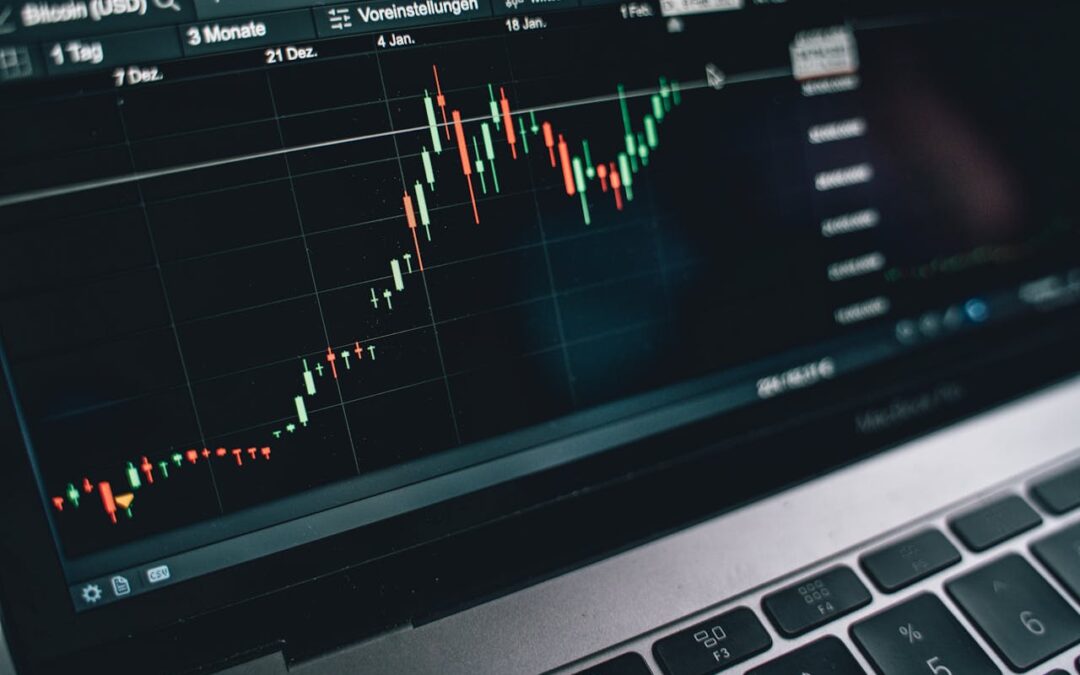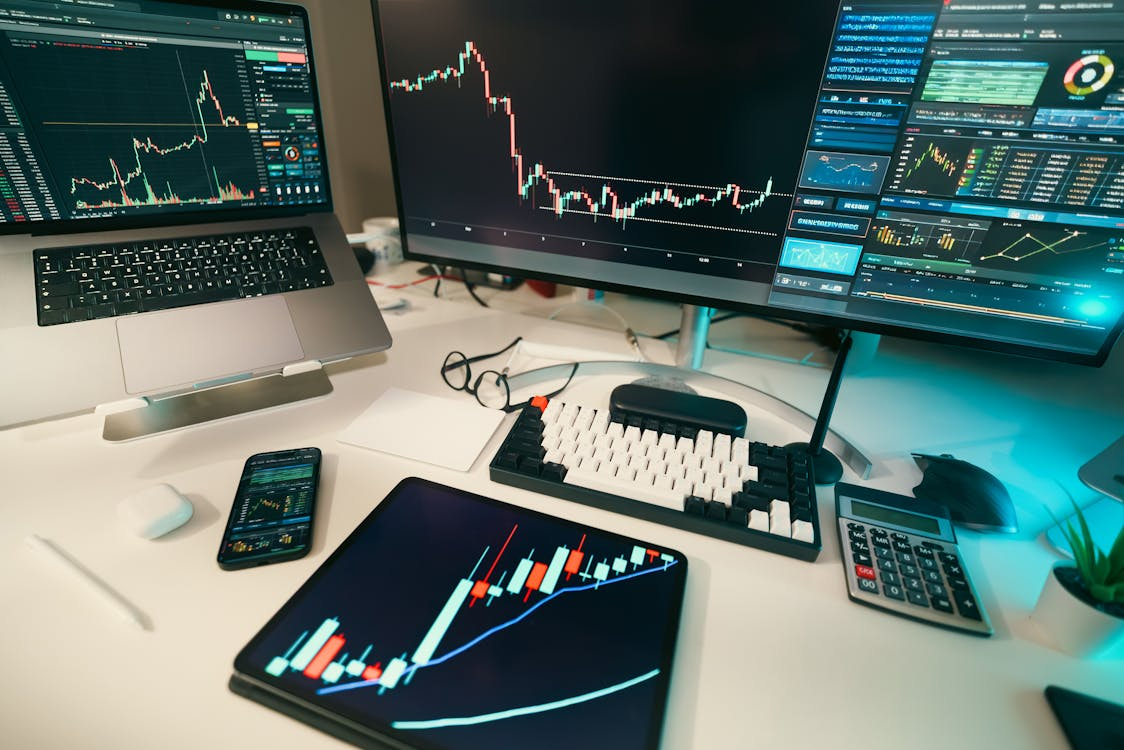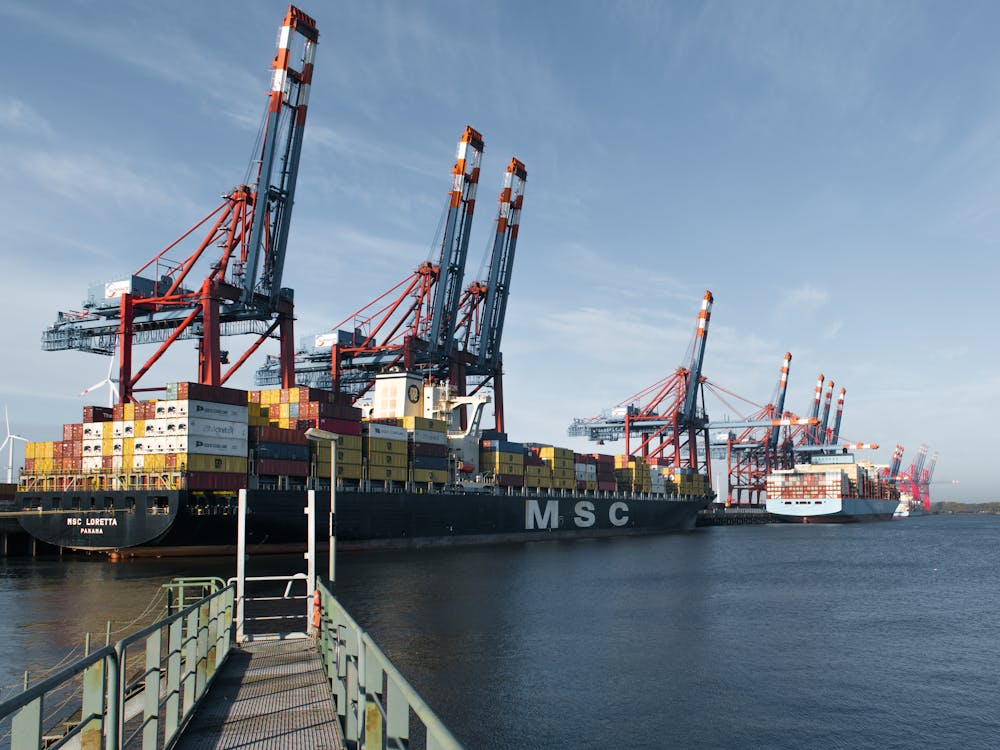
by iio12 | Jul 30, 2025 | Others
Technical analysis is a way of evaluating financial markets by examining price charts and historical data. Think of it like having a toolkit that helps you shape your trading game plan. Instead of relying on news or company performance, technical analysts focus on patterns in price movements, trading volume, and key levels on the chart, like support and resistance. They also use tools like moving averages and other indicators to try and predict where prices might head next.
By interpreting this data, traders aim to make smarter, more calculated decisions.
In this guide, we’ll explore what technical analysis means, how it works, and how you can start using it to improve your trading approach.
What is Technical Analysis?
Technical analysis is a method traders use to study price charts and market data to help predict where prices might go next. It focuses on spotting patterns in things like price movements, trading volume, momentum, and volatility, all to identify good points to enter or exit a trade.
While some say markets move randomly, a closer look often reveals repeating trends and behaviours. Technical analysts believe these recurring patterns, even if not the same each time, can offer valuable clues about future price action.
Markets tend to repeat themselves, maybe not in an identical way, but often with a familiar structure. So when a pattern starts to form, there’s a good chance other traders are noticing it too. That shared recognition is what can turn a pattern into a self-reinforcing move.
How Does Technical Analysis Work?
Technical analysis relies on a range of tools, charts, indicators, drawing tools, and more to help spot trends and trading opportunities. Some of the better-known tools include triangle patterns, moving averages, and Bollinger Bands.
Platforms like City Index offer over 65 technical indicators you can use, and even customise to better fit your personal trading approach.
But at the heart of it all is the price chart. It’s the foundation for any technical trader, offering a visual representation of market behaviour that can guide every decision you make.
Benefits of Technical Analysis
One of the biggest strengths of technical analysis is its versatility. It’s a neutral approach that can be applied to nearly any financial instrument, stocks, forex trading online, commodities, indices, and across any timeframe, from minutes to months. You don’t need to rely on someone else’s forecast. Whether you’re a short-term scalper or a long-term investor, technical analysis can help you spot opportunities and build a solid trade plan.
Another major benefit is its usefulness in identifying entry and exit points. Since markets rarely move in a straight line, prices often fluctuate in a series of ups and downs. With the right tools, technical analysis can help you time your trades within these movements, giving you a better chance to buy low, sell high, and squeeze more value out of each position.
Drawbacks of Technical Analysis
Despite its strengths, technical analysis isn’t perfect. One of its main limitations is that it’s based entirely on historical price data. It assumes that patterns from the past can help predict what might happen in the future, but that’s not always the case.
Markets can be influenced by countless factors, including sudden news events, economic data releases, or political shifts. A technical trader might place a trade based on a chart pattern, only to have it disrupted by something like a surprise interest rate change or poor employment figures. In these cases, a fundamental analyst, who focuses more on news and macroeconomic trends, may be better prepared.
Ultimately, there’s no foolproof method for trading. Success comes down to combining strategy with strong risk management, emotional control, and the discipline to stick to your plan, no matter which tools you use.
Technical Analysis Strategies

Finding a strategy that works for you often takes time, practice, and a bit of trial and error. Most beginners start with simple setups, gradually layering on indicators and rules as they gain more experience. But keep in mind, just because a strategy is complex doesn’t mean it will be more effective. Sometimes, simple strategies can be the most reliable.
Here are a couple of straightforward technical analysis strategies that many traders use:
Moving Average (MA) Crossover
This strategy looks for points where a short-term moving average crosses above or below a longer-term moving average, often signalling a potential trend change.
Example: A trader might buy when the 50-day moving average crosses above the 200-day moving average, and sell when it crosses below.
Bullish/Bearish Divergence
Divergence strategies involve comparing price movement with an indicator like the Relative Strength Index (RSI). When the price is making new highs but the RSI is falling, or vice versa, it could be a warning that the current trend is weakening.
Example: If the price continues climbing while the RSI starts to drop, it might be a sign that momentum is fading, prompting some traders to consider a short position.
Technical Analysis Tools
When it comes to applying technical strategies, having the right tools makes all the difference.
MetaTrader 4 (MT4) is one of the most widely used platforms for technical analysis. It offers a broad range of indicators, drawing tools, and customizable charting features, making it ideal for both new and experienced traders.
Axi clients also have access to Autochartist, an advanced tool that automatically scans the markets for potential setups and trading opportunities based on technical patterns.
For those looking to take things further, the MT4 NexGen add-on provides additional features such as sentiment indicators, correlation tracking, and advanced order management, helping you make smarter, more informed trading decisions.
Conclusion
Technical analysis might seem complex at first, but once you get the hang of reading charts and recognising patterns, it becomes a valuable tool in your trading arsenal. It’s not about predicting the future with certainty, but about stacking the odds in your favour by making informed, data-driven decisions. Whether you’re new to trading or looking to refine your current strategy, learning the fundamentals of technical analysis can help you navigate the markets with more confidence and clarity.

by iio12 | Jun 27, 2025 | Freight Services
Marine insurance is essential for businesses transporting goods, especially when shipping across oceans and international borders. It offers vital financial protection against the risks of cargo damage or loss during transit, whether by sea or land.
A well-rounded marine insurance policy provides broad coverage, helping to ensure your goods and assets are protected from a wide range of potential threats.
In this article, we’ll explore the key features to look for in a comprehensive marine insurance policy and how it can benefit both companies and individuals engaged in maritime trade. From safeguarding cargo to covering vessels, understanding the main elements of marine insurance can help you make a confident and informed choice.
What is Marine Insurance?
Marine liabilities insurance is a type of coverage that protects against the loss or damage of ships, cargo, and related equipment during transportation. It applies not only to sea travel but also to land-based segments of a shipment’s journey, offering end-to-end protection for goods in transit. Over time, marine insurance has developed into a sophisticated system that addresses the wide range of risks involved in global trade.
This type of insurance involves a detailed risk evaluation process, considering factors such as severe weather, navigation issues, and logistical mistakes before providing coverage. Businesses can customise their policies to meet specific needs, ensuring all stages of the shipping process are properly insured.
For example, marine transit and cargo insurance can help cover financial losses if goods are damaged, whether from natural events or human error, while in transit. Marine insurance protects the value of cargo from the point of origin to its final destination, whether the journey involves road, rail, air, or sea.
Beyond financial compensation in the event of a claim, marine insurance also promotes better risk management practices, allowing companies to operate more confidently and focus on their core business activities without constantly worrying about unexpected losses.
Key Elements to Look for in a Comprehensive Marine Insurance Policy

Choosing the right marine insurance policy is crucial to protecting your assets and operations. To make an informed decision, here are the key elements you should look for when evaluating a comprehensive marine insurance plan:
1. Vessel Protection
Whether you operate a small boat or manage a large commercial fleet, vessel protection is a vital part of any marine insurance policy. Look for the following components:
-
Hull Insurance: Covers physical damage to your vessel’s structure and machinery, including incidents like collisions, accidents, or damage from storms.
-
Collision Liability: Pays for damages or repairs if your vessel collides with another ship or object.
-
Crew Liability: Provides coverage in case crew members are injured or suffer property loss during operations, including medical expenses and compensation.
Having proper vessel coverage means you’re financially protected from unexpected disruptions that could impact your maritime operations.
2. Environmental Risk Coverage
Maritime activities are often exposed to environmental uncertainties such as rough seas, severe storms, and natural disasters. A solid marine policy should include:
-
Weather-Related Damage: Protection from damage caused by extreme weather conditions, such as hurricanes or tidal surges.
-
Pollution Liability: Covers the costs of cleanup, fines, and penalties resulting from spills or leaks (e.g., oil or hazardous cargo) due to accidents.
This type of coverage ensures that you’re not left dealing with hefty environmental claims on your own.
3. Cargo Coverage
If you’re transporting goods, cargo protection is one of the most critical parts of your insurance policy. This covers your shipments whether they’re moving across sea, land, or air.
Common risks include:
-
Water Damage: Covers losses caused by rain, floods, or leaks.
-
Theft or Piracy: Protection against cargo theft during transit, especially in high-risk regions.
-
Fire or Explosion: Especially important for shipments containing flammable materials.
-
Accidental Damage: Includes losses from mishandling during loading, unloading, or while goods are in transit.
Cargo insurance safeguards your investment and helps maintain your credibility with clients by ensuring prompt compensation in case of loss or damage.
4. Accidents and Property Damage
Marine insurance should also cover property damage, whether onshore or offshore, during various stages of the shipping process. Key elements include:
-
Damage During Loading/Unloading: Covers any damage to cargo or equipment during these critical operations.
-
General Average Coverage: Ensures shared responsibility among all stakeholders if sacrifices (like jettisoning cargo) are made to save a voyage.
-
Shipwreck or Sinking: Includes salvage costs and reimbursement for lost cargo if a vessel sinks due to covered risks.
This layer of protection helps ensure financial stability in the face of costly incidents.
5. Theft and Piracy Coverage
Theft and piracy remain significant concerns in the maritime industry, especially in high-risk regions. From cargo theft to full vessel hijackings, your marine insurance policy must include protection against criminal activity. Key coverage should include:
-
Theft of Goods: If your cargo is stolen during transit, your policy should reimburse the full value of the missing items.
-
Pirate Attacks: In areas where piracy is a known threat, your policy should protect against losses resulting from hijackings or the theft of goods at sea.
This type of protection offers peace of mind, knowing your shipments and vessels are covered in case of malicious incidents.
6. Efficient Claims Process and Ongoing Support
A reliable claims process can make all the difference when something goes wrong. When evaluating marine insurance providers, be sure to look for:
-
Quick Claims Settlement: Time is critical after a loss. Choose an insurer known for fast, straightforward claims handling so your operations can resume with minimal delay.
-
24/7 Customer Support: Maritime issues can occur at any hour. Ensure your provider offers around-the-clock assistance for claims, emergencies, or advice during transit.
A transparent and supportive claims process helps reduce stress and keeps your business running smoothly when incidents occur.
7. Customizable Coverage and Add-Ons
Every business has unique needs, and marine insurance should be flexible enough to reflect that. Many providers offer optional add-ons and customizable plans, such as:
Full Replacement Value Coverage: Especially useful for high-value shipments, this ensures you’re compensated for the total cost of replacing your goods if they’re lost or destroyed.
Customizing your policy allows you to align your coverage with your exact operational requirements, giving you better control over risk management and cost-efficiency.
By focusing on these essential features, protection against theft and piracy, a responsive claims process, and customizable options, you can build a marine insurance policy that truly supports your shipping operations and long-term business goals.

by iio12 | Jun 26, 2025 | E-commerce
A visually appealing and distinctive e-commerce website is essential for building a strong online presence and driving sales. In fact, research shows that users form an opinion about a website in just 50 milliseconds, that’s less than the blink of an eye. So, first impressions matter, and your design needs to instantly grab attention while offering a seamless user experience.
Whether you’re launching your very first online store or looking to refresh an existing one, this guide will walk you through the key ingredients of a successful e-commerce website. From proven design principles to real-world examples of high-performing sites, we’ll help you create a shopping experience that not only looks great but also converts.
1. High-Quality Product Photos
Your product images are often the first thing customers notice, and they can make or break a sale. Every item on your site should feature high-resolution photos with zoom functionality. One picture simply isn’t enough. Include multiple angles and detailed shots to give shoppers a true sense of what they’re buying. This level of transparency can help reduce returns, especially since about 25% of returns happen because the item didn’t match expectations.
2. Streamlined Checkout Process
Shopping cart abandonment is a major issue, with nearly 68% of customers leaving before completing their purchase. But with a few strategic updates, you can significantly reduce this number.
First, be upfront about all costs; don’t surprise shoppers with hidden fees at checkout. A simple way to do this is by letting users calculate shipping costs directly from their cart.
Second, don’t force people to create an account just to buy something. Offer a guest checkout option to make the process faster and less frustrating.
Lastly, simplify the entire experience. Keep your checkout process to five steps or fewer, and avoid asking users to enter the same information more than once. A smooth, efficient process keeps customers moving forward instead of clicking away.
3. Power of Customer Reviews
Customer reviews are a vital tool for boosting trust and increasing conversions by as much as 18%. Shoppers rely on real feedback to decide whether a product is worth buying. That means showing both the good and the bad. Surprisingly, when there are no negative reviews, 30% of people assume the reviews are fake. Displaying a full range of opinions builds credibility and encourages more confident purchases.
Reviews also work wonders for your site’s SEO. Since reviews are fresh, user-generated content, they help improve your visibility in search engines. Shoppers often search for a product name followed by the word “review,” so having reviews on your product pages increases your chances of showing up in those results.
4. Clear and Customer-Friendly Return Policies
A well-thought-out return policy does more than just manage product returns; it builds trust. When customers know they can easily return a product if needed, they’re much more likely to complete the purchase. On the other hand, a confusing or overly strict return policy can drive people away for good.
Your return policy could be the deciding factor between a one-time buyer and a long-term customer. Keep it clear, fair, and easy to find on your website.
But trust doesn’t stop at your return policy. The overall user experience of your website plays a huge role in earning customer confidence. That’s why it’s crucial to work with a web design team that understands how to build e-commerce websites that are fast, intuitive, and built around proven best practices.
5. Mobile-Optimised, Responsive Design

With mobile shopping on the rise, your website must look and function flawlessly on every screen size, from smartphones and tablets to laptops and desktops. Back in 2013, mobile accounted for 20% of U.S. e-commerce spending and 40% of online traffic during Black Friday, and that number has only grown since.
Responsive design ensures your website adjusts automatically to any device, offering a smooth browsing and buying experience wherever your customers are. It also improves your search engine visibility, as Google considers responsive design a best practice for SEO.
If you’re unsure whether your site is responsive, try viewing it on your phone or shrinking the browser window on your desktop. A responsive site adapts seamlessly, no pinching, zooming, or endless scrolling needed.
6. SEO: Attract the Right Audience
Even the most beautifully designed site won’t deliver results if no one can find it. That’s where SEO comes in.
Search engine optimisation is a long-term investment that helps your site appear in search results for relevant keywords, bringing in targeted traffic that’s more likely to convert. Unlike pay-per-click (PPC) ads, which disappear when the budget runs out, SEO keeps working for you over time and increases your site’s value organically.
A solid SEO strategy helps drive continuous growth, improve visibility, and ensure your e-commerce store reaches the right customers.
These elements, clear return policies, mobile responsiveness, and smart SEO are fundamental to building a successful e-commerce store. Whether you’re launching a new site or revamping an old one, keeping these best practices in mind will set you up for long-term success.
If you’re searching for a reliable web design agency to bring your online store to life, consider working with Orion Creatives. They specialise in user-friendly, high-converting e-commerce websites and would love to help you create a site that stands out.
Final Thoughts
In today’s competitive online market, a well-designed, user-friendly e-commerce website is essential for attracting customers and driving sales. By focusing on strong visuals, seamless checkout, responsive design, clear return policies, and effective SEO, you’ll set your store up for long-term success. With the right strategy and support, your online business can grow and thrive.



